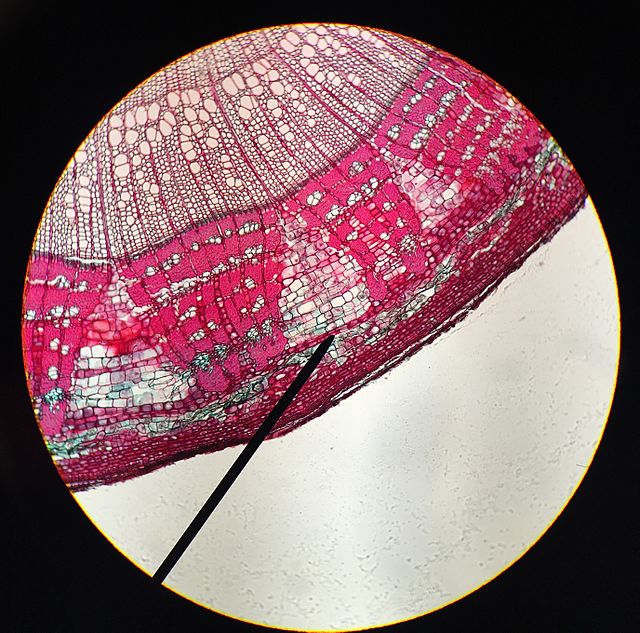Loading AI tools
Layer of plant tissue with cells for growth From Wikipedia, the free encyclopedia
A cambium (pl.: cambiums or cambia), in plants, is a tissue layer that provides partially undifferentiated cells for plant growth. It is found in the area between xylem and phloem. A cambium can also be defined as a cellular plant tissue from which phloem, xylem, or cork grows by division, resulting (in woody plants) in secondary thickening. It forms parallel rows of cells, which result in secondary tissues.[1]

There are several distinct kinds of cambium found in plant stems and roots:
The cambium of many species of woody plants are edible;[2] however, due to its vital role in the homeostasis and growth of woody plants, this may result in death of the plant if enough cambium is removed at once. The cambium can generally be eaten raw or cooked, and can be ground to flour for use in baking.
Seamless Wikipedia browsing. On steroids.
Every time you click a link to Wikipedia, Wiktionary or Wikiquote in your browser's search results, it will show the modern Wikiwand interface.
Wikiwand extension is a five stars, simple, with minimum permission required to keep your browsing private, safe and transparent.